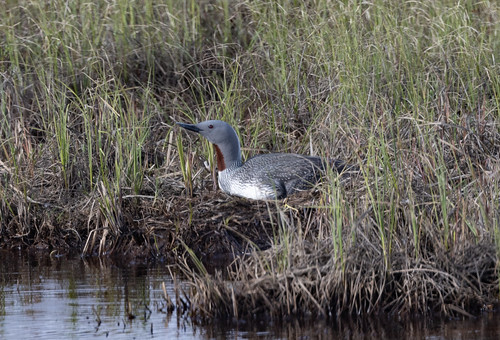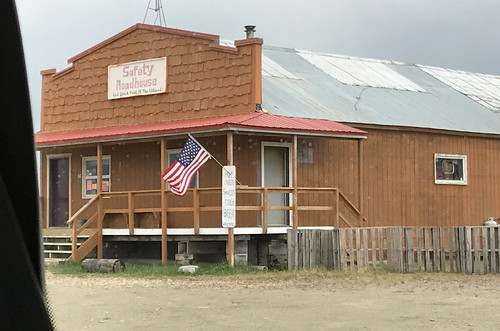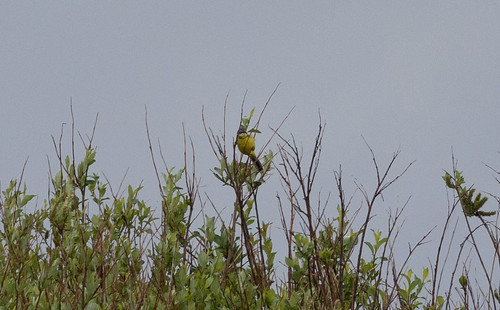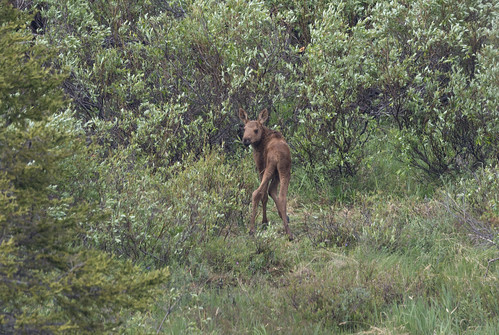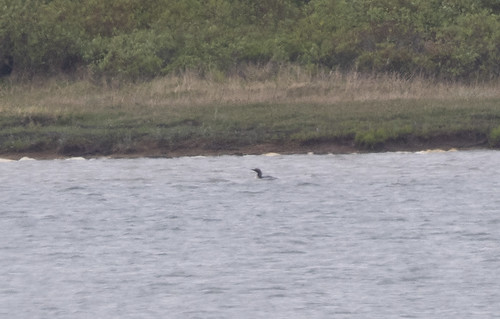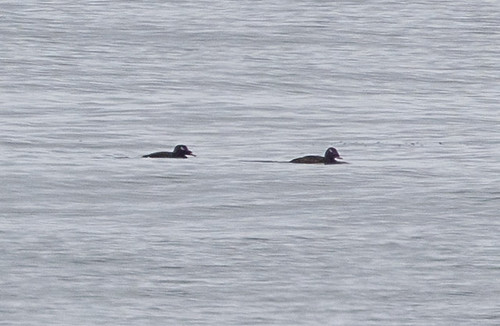Nome is on the Bering Sea, so many of the unusual birds that turn up here from Eurasia are waterbirds. So naturally our birding group spent more time on the one road out of Nome that traces the shoreline. The Nome-Council Road, a 72-mile gravel road between Nome and the Niukluk River, traces the coast of the Seward Peninsula along the Bering Sea for almost half the road's length.
Much of the coastal birding we did near Nome starting the day we arrived was along the first stretch of the Council Road, which passes Cape Nome, the Nome Harbor, and the Safety Lagoon. The stretch between Nome and the no-longer-existing coastal town of Solomon is part of the Iditarod Trail. The Safety Roadhouse, on Safety Sound 22 miles east of Nome along the Council Highway, called “the best dive bar on earth,” serves as the final checkpoint of the Iditarod before the finish line in Nome.
At Solomon, the Council Road turns inland and heads northeast, ending abruptly just before it reaches the Niukluk River and the community of Council on the far side. No bridge crosses the Niukluk, and to discourage people from attempting to cross in their vehicles, the end of the Council Road is very clearly marked.
We did a bit of the Council Road the evening of June 13, after birding the Teller Road all day. At Cape Nome I got my lifer Thick-billed Murre.
On June 14, we birded the Council Road all the way to its end. When we reached the Solomon area, we found a lifer Eastern Yellow Wagtail.. My photos weren't good, but this turned out to be the only one we’d see on the entire trip.
When we worked our way inland, we saw more moose.
I got a taste of home seeing distant Northern Harriers and a closer Rough-legged Hawk—two species that migrate in good numbers over Hawk Ridge.
We also got to see a Gyrfalcon on a distant cliff.
I had more trouble photographing the Boreal Chickadee, American Tree Sparrow, and American Pipit here than I usually do in Duluth, but somehow even familiar birds nesting in such a remote area so far from my home are magical anyway.
When we made it back to the Safety Lagoon outside Nome, Erik Bruhnke spotted an extremely rare Arctic Loon at quite a distance. The Arctic Loon is an Old World species; the almost identical Pacific Loon breeds and winters in North America. The Arctic Loon’s important distinguishing feature is its white flanks. I got clear looks through both Erik's and Barry’s scopes, but the water obscured the bird’s sides most of the time, so I had to watch steadily for full minutes at a time in order to get clear glimpses of the white flanks when the bird was at the crest of a wave. My photos are singularly poor, but at least hint at the defining white flanks.
As if to celebrate, all four other species of loons showed up that very day, though the Yellow-billed Loon was a fly-by and I couldn’t get a photo in time. A VERY close Red-throated Loon on a nest was too close to the road for us to pile out of the van for photos, which would have disturbed the bird. So my pictures were taken through the window.
I also got a distant quick look at three Emperor Geese (another lifer!) as they took off. Only a few of us even got to see them, so I can hardly whine about not getting a picture.
That was it for our full day on the Council Road. We birded a short stretch of it again before our flight out of Nome on June 16th, when I saw my lifer Stejneger’s Scoter (a Eurasian species split from the White-winged Scoter in 2019). That bird was a long distance away, and like the Arctic Loon, I had to be patient to see its defining characteristics—black rather than brownish flanks and a much more pronounced knob on its bill. The bird was in a long line of scoters and eiders, and I can’t be 100 percent certain that the bird in my photographs is the definite Stejneger’s Scoter we saw through the scopes.
Within that flock were also the only breeding King Eiders I’ve ever seen in my life, so the great distance was doubly frustrating—breeding male King Eiders are stunning!
But birds go where they want, not taking some strange birder’s photographic yearnings into account. If I wanted birds to pose for me, I’d go to a zoo.
